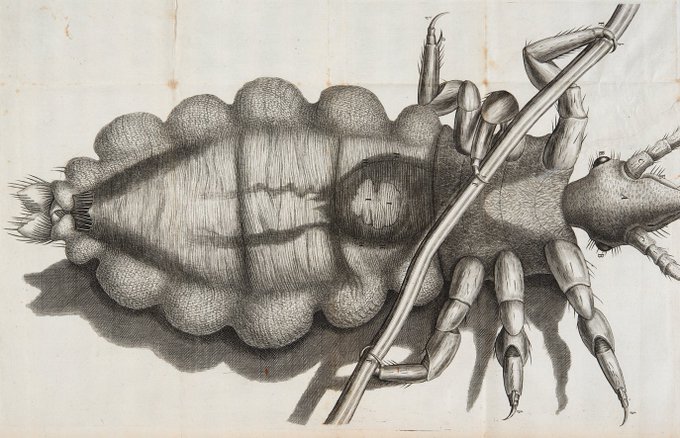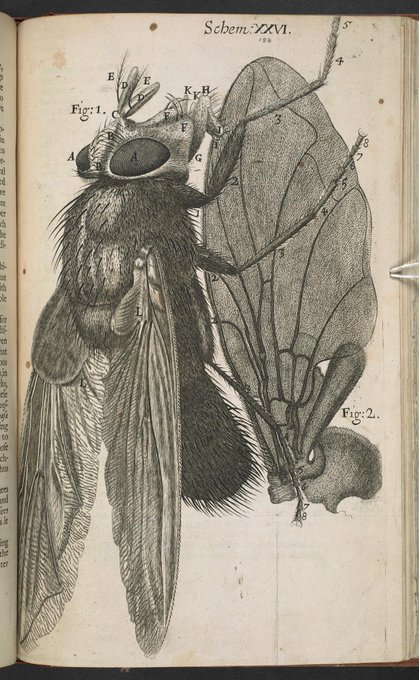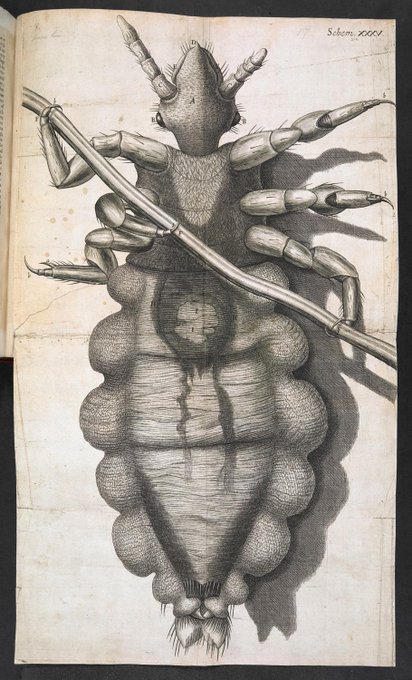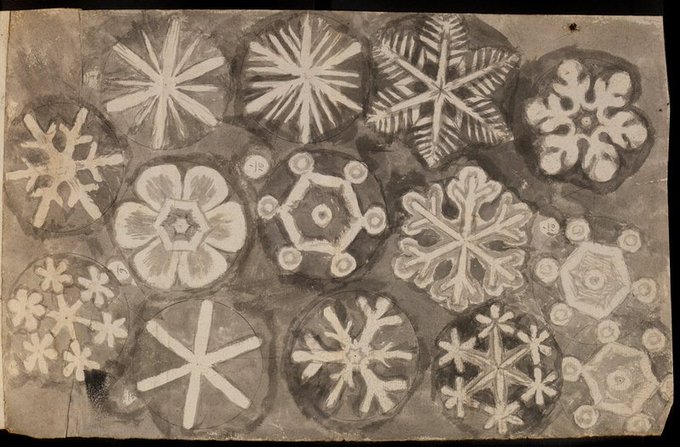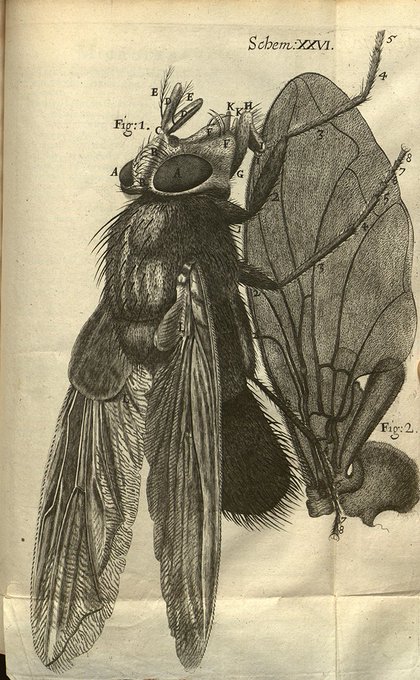MicrographiaのTwitterイラスト検索結果。 25 件
Our Pybus Collecion includes a copy of Robert Hooke's Micrographia, published in 1665. It was one of the first popular science books, and featured drawings of the microscopic world not seen before.
Check out our June 2010 blog post about the work here: https://t.co/CutptbGA8D
@17thCenturyLady @MuseumCromwell @jdmccafferty @cheapsellotape @KingCharlesIRTN @ElizStJohn @clairejowitt @KL_Clements Robert Hooke's book Micrographia was first published in 1664, containing drawings of the creatures he was able to observe through microscopes. It must have given people quite a shock!
Robert #Hooke's "Micrographia" (1665) was the first work to depict microscopic specimens, and includes his famous illustration of a flea. Hooke praised the "beauty" of this creature, with its "suit of sable Armour" and "sharp pinns...like Porcupine’s Quills." 🦔🔬 #ArchivesBugs
At @TheHuntington, “Seeing for Yourself” will look at how artists/scientists have made hidden worlds visible from the 1500s on. The show will feature items ranging from Robert Hooke's “Micrographia,” featuring etchings of minute objects, to depictions of viruses like COVID-19.
Anyway, lots more could be said about Hooke (he discovered plant cells and coined the term "cell" itself!) but he's so cool I snuck a Micrographia illustration of a louse into my comic series Hocus Pocus: https://t.co/SvhVpv3Xap #SciArtTweetStorm
Micrographia was groundbreaking for Hooke's breathaking etchings of the microscopic world, the first time anyone would have seen such images. There were far too many for me to include, but I wanted to show a snapshot of as wide a range as possible - plant, animal and mineral.
Back to Issue #3 and on a cheerier note, here is my favourite panel from the Pepper's Ghost story. I was chortling as I drew it.
The horrific creature being projected is a louse drawn from Robert Hooke's 1665 landmark illustrated tome "Micrographia".
Two new #MuseumJigsaws🧩 to start your week off!
If the flea from Robert Hooke's Micrographia doesn't tickle your fancy, then devour the tasty treats of chef Charles Francatelli.
Puzzle away: https://t.co/Wk9UZlgGxP
These #SpookyTuesday spiders come from Micrographia (1665) by Robert Hooke. Check it out on our digital collections and zoom in really close! #OthmerLibrary
https://t.co/mKv3dGkMxh
In 1665 Robert Hooke published his most famous work Micrographia (”Small Drawings”). In it he included his studies and illustrations of the crystal structure of snowflakes and first used the word cell to name the microscopic honeycomb cavities in cork.5/
@17thCenturyLady @jdmccafferty @RestorationHat @DrRJWarren @saralread @tomb1649 @kristianjmartin @quintonjournals @cheapsellotape Robert Hooke, FRS (1635-1703), co-inventor of the watch balance spring, architect, but remembered best for his Micrographia (1665) - you'll have seen his Flea.
Worked with Boyle, Newton et al. #StuartsSaturday #KeepItStuart
It was #OnThisDay in 1664, the great British natural philosopher Robert Hooke FRS, first showed his copy of the hugely influential Micrographia to the Royal Society. Find prints from this seminal work in our Print Shop: https://t.co/OkGAr01G5r
Micrographia, or some physiological descriptions of minute bodies made by magnifying glasses, with observations and inquiries thereupon.
https://t.co/dKh5IqgykR
Robert Hooke, English natural philosopher, architect and polymath (author of 'Micrographia') died #OnThisDay in 1703.
This thread is a series of images in the #history of #scicomm documenting the shift in 17th century Europe from divine causation to empiricism (via observation, experiment, reasoning, & formation/testing of hypotheses & theories).
[Micrographia, 1665 https://t.co/1202Hyolle ]
It's cold out there today! We've got Hooke on our minds at the #T3D2019 labs, here's a few #T3D2019_PoftheD from his Micrographia (1665) and his 1662 article in @royalsociety Philosophical Transactions
Robert Hooke was born on 28 July 1635 N.S. His Micrographia includes the 1st use of "cell" as a biological term https://t.co/9YXRp9beYw
Robert Hooke, scientist, born #OTD 1635. Micrographia, 1665 @britishlibrary https://t.co/IWOxYuXxKg
Micrographia (1665) by Robert Hooke was the 1st book in English on microscopy https://t.co/8GBhZA6ZqG Digitized @mobotgarden #TinyTuesday

